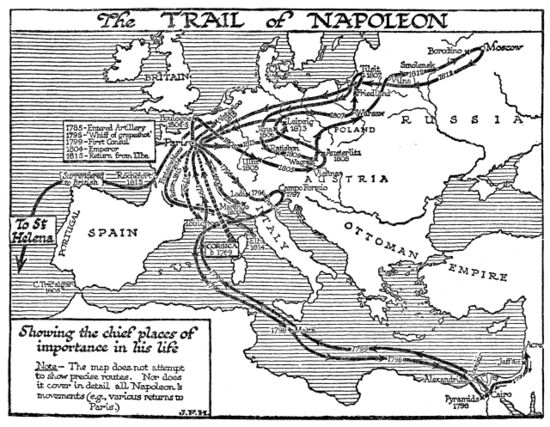imported>Chunbum Park |
imported>John Stephenson |
| (142 intermediate revisions by 5 users not shown) |
| Line 1: |
Line 1: |
| == '''[[Hausdorff dimension]]''' ==
| | {{:{{FeaturedArticleTitle}}}} |
| ''by [[User:Melchior Grutzmann|Melchior Grutzmann]] (and [[User:Brandon Piercy|Brandon Piercy]] and [[User:Hendra I. Nurdin|Hendra I. Nurdin]])
| | <small> |
| | | ==Footnotes== |
| ----
| |
| | |
| In [[mathematics]], the '''Hausdorff dimension''' is a way of defining a possibly fractional exponent for all figures in a [[metric space]] such that the dimension describes partially the amount to that the set fills the space around it. For example, a [[plane (geometry)|plane]] would have a Hausdorff dimension of 2, because it fills a 2-parameter subset. However, it would not make sense to give the [[Sierpiński triangle]] [[fractal]] a dimension of 2, since it does not fully occupy the 2-dimensional realm. The Hausdorff dimension describes this mathematically by measuring the size of the set. For self-similar sets there is a relationship to the number of self-similar subsets and their scale.
| |
| | |
| === Informal definition ===
| |
| Intuitively, the dimension of a set is the number of independent parameters one has to pick in order to fix a point. This is made rigorously with the notion of ''d''-dimensional (topological) [[manifold]] which are particularly regular sets. The problem with the classical notion is that you can easily break up the digits of a real number to map it bijectively to two (or ''d'') real numbers. The example of space filling curves shows that it is even possible to do this in a continuous (but non-bijective) way.
| |
| | |
| The notion of Hausdorff dimension refines this notion of dimension such that the dimension can be any non-negative number.
| |
| | |
| Benoît Mandelbrot discovered<ref>B.B. Mandelbrot: ''The fractal geometry of nature'', Freemann '''(1983)''', ISBN 978-0-716-711-865</ref> that many objects in nature are not strictly classical smooth bodies, but best approximated as fractal sets, i.e. subsets of '''R'''<sup>''N''</sup> whose Hausdorff dimension is strictly greater than its topological dimension.
| |
| | |
| | |
| === Hausdorff measure and dimension ===
| |
| Let ''d'' be a non-negative real number and ''S'' ⊂ ''X'' a subset of a metric space (''X'',''ρ''). The ''d''-dimesional Hausdorff measure of scale ''δ''>0 is
| |
| :<math> H^{d*}_\delta(S) := \inf \{\sum_{i=1}^\infty r_i^d : S\subset\bigcup_{i=1}^\infty B_{r_i}(x_i), r_i\le\delta \}</math>
| |
| where B<sub>''r''<sub>''i''</sub>(''x''<sub>''i''</sub>)</sub> is the open ball around ''x''<sub>''i''</sub> ∈ ''X'' of radius ''r''<sub>''i''</sub>. The ''d''-dimensional Hausdorff measure is now the limit
| |
| :<math> H^{d*}(S) := \lim_{\delta\to0+} H^{d*}_\delta(S)</math>.
| |
| As in the Carathéodory construction a set ''S'' ⊂ ''X'' is called ''d''-measurable iff
| |
| :<math> H^{d*}(T) = H^{d*}(S\cap T)+ H^{d*}(T\cap X\setminus S)</math> for all ''T'' ⊂ ''X''.
| |
| A set ''S'' ⊂ ''X'' is called Hausdorff measurable if it is H<sup>''d''</sup>-measurable for all ''d''≥0.
| |
| | |
| ''[[Hausdorff dimension|.... (read more)]]''
| |
| | |
| {| class="wikitable collapsible collapsed" style="width: 90%; float: center; margin: 0.5em 1em 0.8em 0px;"
| |
| |-
| |
| ! style="text-align: center;" | [[Hausdorff dimension#Literature|notes]]
| |
| |-
| |
| |
| |
| {{reflist|2}} | | {{reflist|2}} |
| |}
| | </small> |
Latest revision as of 10:19, 11 September 2020
Napoleon (Napoleon Bonaparte or, after 1804, Napoleon I, Emperor of the French) was a world historic figure and dictator of France from 1799 to 1814. He was the greatest general of his age--perhaps any age, with a sure command of battlefield tactics and campaign strategies, As a civil leader he played a major role in the French Revolution, then ended it when he became dictator in 1799 and Emperor of France in 1804 He modernized the French military, fiscal, political legal and religious systems. He fought an unending series of wars against Britain with a complex, ever-changing coalition of European nations on both sides. Refusing to compromise after his immense defeat in Russia in 1812, he was overwhelmed by a coalition of enemies and abdicated in 1814. In 1815 he returned from exile, took control of France, built a new army, and in 100 days almost succeeded--but was defeated at Waterloo and exiled to a remote island. His image and memory are central to French national identity, but he is despised by the British and Russians and is a controversial figure in Germany and elsewhere in Europe.
Rise to Power
Once the Revolution had begun, so many of the aristocratic officers turned against the Revolutionary government, or were exiled or executed, that a vacuum of senior leadership resulted. Promotions came very quickly now, and loyalty to the Revolution was as important as technical skill; Napoleon had both. His demerits were overlooked as he was twice reinstated, promoted, and allowed to collect his back pay. Paris knew him as an intellectual soldier deeply involved in politics. His first test of military genius came at Toulon in 1793, where the British had seized this key port. Napoleon, an acting Lieutenant-Colonel, used his artillery to force the British to abandon the city. He was immediately promoted by the Jacobin radicals under Robespierre to brigadier-general, joining the ranks of several brilliant young generals. He played a major role in defending Paris itself from counter-revolutionaries, and became the operational planner for the Army of Italy and planned two successful attacks in April 1794. He married Josephine (Rose de Beauharnais) in 1796, after falling violently in love with the older aristocratic widow.[1]
- ↑ Englund pp 63-73, 91-2, 97-8
